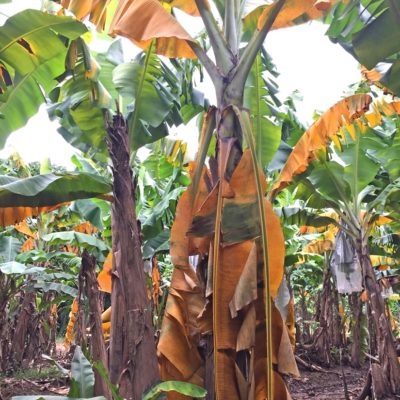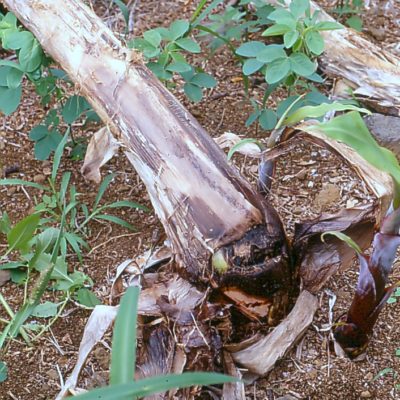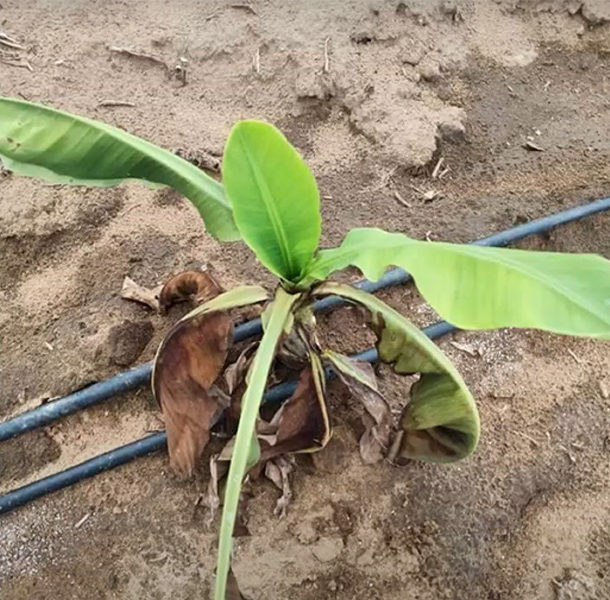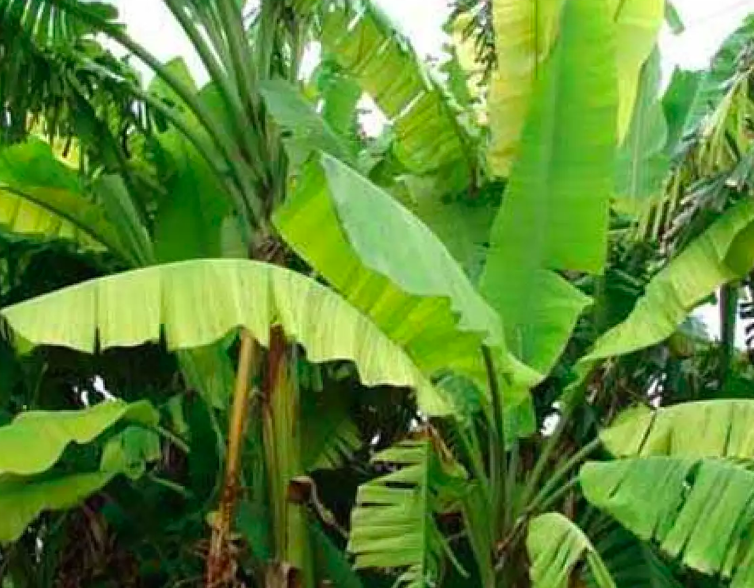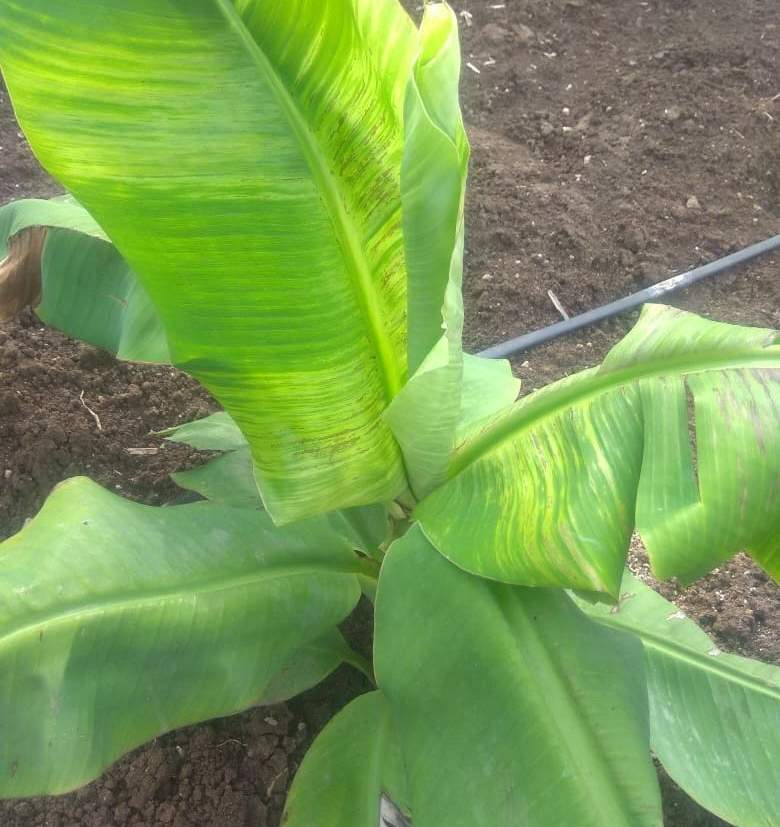Farmer Mr Vijay Bhai tried his hand at planting banana in his small ancestral plot, and used suckers from a friendly neighbours’ farm. He dutifully followed the conventional fertigation and irrigation schedule and was expecting a good return from the banana sales. Sadly, the young banana plants started dying and emitting foul odours. The leaves started drying out all of a sudden, and the crown of the plants was rotting away.
Mr Vijay Bhai made frantic calls to all his farmer friends, who helped him reach Mr Rahul Mane. Mr Rahul advised him to send samples from his field for testing along with videos and soon diagnosed the plantation to be suffering from the dreaded Erwina Rot. “This disease mostly effects young suckers, so It is extremely important to use disease free suckers, or better yet tissue culture hardened plants, because they are already free from pathogens and viruses, and grown under sanitary conditions in a greenhouse” says Mr Rahul.
Erwina rot is a bacterial infection caused by Erwinia carotovora or P carotovora and commonly affects several species of plants entering through wounds/pruning tears, spread by insects or rotting vegetation and high humidity conditions.
Ideal Management For Banana Farms Affected By Ervina Rot
Erwina bacterium are commonly found in soil and are usually symbiotic when found in small concentration. However high humidity and poor drainage and lack of soil conditioning can give the disease a chance to infect suckers. Hence farmers keep “On field capacity” ( known as Vapsa condition) which is neither too dry nor too wet.
It is absolutely necessary to plant disease free suckers, which should be dipped in Copper Oxychloride (40 grams in 10 Litres water)+ Streptocyclin (3 grams in 10 Litres) for 30 min before planting. The TC plants are a preferred alternative because they are already free from pathogens and do not require this pre-treatment.
In infected plantations, remove infected banana plants immediately. Always remove plant residues after harvest.
To Erwina affected plants, apply Streptocyclin 1 gram in 10 liters water by drenching the growing tips, as well as blue copper along with a Bactericide (1 gram per litre in water).
Another alternative is to use Bleaching powder (4 kgs in 200 lit water), applied as 300- 350 ml per plant by spraying/drenching
Nature of damage:
- This disease is more pronounced on young suckers leading to rotting and emitting of foul odour.
- Rotting of collar region is a commonest symptom followed by epinasty of leaves, which dry out suddenly.
- If affected plants are pulled out it comes out from the collar region leaving the corm with their roots in the soil.
- Splitting of pseudo stem is common in late stage of infection in cultivars Robusta, Grand Naine.
- When affected plants are cut open at collar region yellowish to reddish ooze is seen
- In early stage of infection dark brown or yellow water soaked areas are more in the cortex area.
- In advance stage the interior lesions may decay to such extent that cavities surrounded by dark spongy tissues are formed.
- This soft rotting may spread radially towards growing point through the cortical tissues. The rotten corm emits foul smell.
Cultural Control:
- Good drainage and soil conditioning can control the disease to some extent.
- Plant disease freeTissue Culture Plants.
- Remove infected plants immediately.
- Remove plant residues after harvest.
- Practice crop rotation by using crops that are not susceptible to the bacterial rot disease like soybean, forage legumes and small grains. Banana should not be grown along with onion and other vegetables. — Control nematodes and other insect pests that serve as vectors of the bacteria to invade the plant tissues. — Avoid planting during rainy season and use of bigger Plants.
Chemical control:
- Drench with Methoxy Ethyl Mercuric Chloride (Emisan-6) 0.1 / or Sodium hypochlorite 10% or Bleaching powder 20g /litre/tree.
- Drench with 2% bleaching powder after three months of planting to control the disease in the field.

